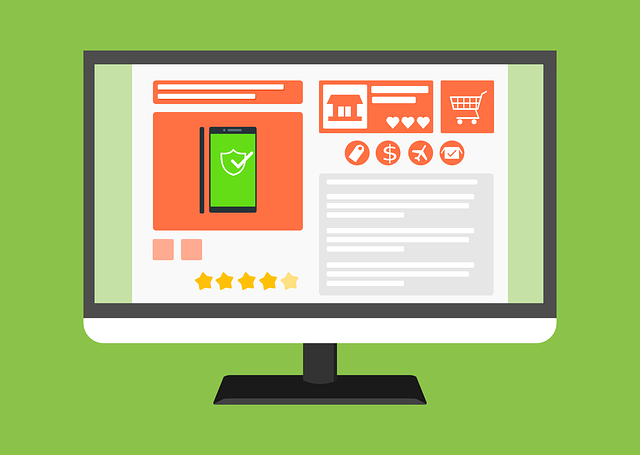6 E-Commerce Copywriting Tips to Increase Conversions

Your online store is only as good as the words on the page. Even if you have a great web design and the best value out there, it doesn’t matter if you haven’t put much thought into the textual content. And if potential customers aren’t persuaded to buy your products, to put it simply, they won’t. This is why you need to focus on e-commerce copywriting. Included in this are your product descriptions, category pages, email newsletters, and advertisements. An e-commerce copywriter’s job is to engage with the customers and convince them to make a purchase. With this in mind, you are going to need a unique selling proposition (USP) to prove yourself better than the competition. Continue reading to gain some insight into what e-commerce copywriting can do for your business.
Know Your Audience
The first part of e-commerce copywriting is doing research to learn what your audience’s preferences are. Otherwise, how are you capable of writing content that compels them to head over to your site? Unlike in the physical world where a consumer can truly interact with a product, you have to figure out how to get at what that experience is like through just words and images. This means, as you are picturing your ideal customer, you need to consider what their behaviors and lifestyle are like. One easy way to do this is to directly ask for customer feedback. This could come in the form of emailed surveys or requests to review a product online. From there, you will be able to effectively segment customers and develop advertising content accordingly.
Be Straightforward
You need to convince a potential customer in the matter of a few words that your product is worth buying. Most people will simply skim through long bodies of text. This means you have to get to the point in your e-commerce copywriting. Format your text in short paragraphs or bulleted lists. By doing this, you increase the readability of the page because the customer’s attention is drawn to what they perceive as important information. Another way to be clear about your intentions is by having a strong call to action (CTA). A CTA is an element of your website that encourages users to take a specific action. Buttons with CTAs on e-commerce websites may include phrases like “add to cart” or “buy now.” You just have to combine a verb with an adverb and or a subject.

Photo by Anete Lusina on Pexels
Create Captivating Headlines
In any piece of digital writing, people are more likely to read the headline than the body copy. Once again, we live in a world of skimmers. For one thing, the headline is the biggest text on the page. For another, it’s the simplest, yet catchiest, text on the page. Even if the rest of your copy is excellent, having a bad headline could mean losing a customer, right off the bat. To make them appealing, go back to who your audience is. What problem do they want you to solve? Specify it in the headline, and identify how your product provides that desired solution. Make sure that you aren’t writing it exactly how your competitors are. You need to be recognized as unique.
Highlight Your Benefits
How do you stand out from the pack? You explain why your product is the best, not just what it is. Show customers how you will benefit their lives. The point of e-commerce copywriting is that you are writing to sell. Using the priorly mentioned bulleted lists, you can organize an information hierarchy, based on how persuasive each point is. That is to say, the most persuasive points should be at the top. But you do need to know what kind of things are going to come across as attractive to your audience. For example, you could comment on using sustainably-sourced materials. Or you could mention that your products are individually handmade. There is a world of possibilities for how to step outside of the box with enticing features that go beyond color and size.
Branded Language
Incorporate words that define your brand’s culture and mission. You aren’t a faceless, mindless company, so don’t pretend to be one. If your business already has a specific personality attached, use that to your advantage in your e-commerce copywriting. The kind of branded language that you use should be consistent across platforms. Do the same with your imagery. This way, consumers feel like they know you better and they are more likely to recognize you in the future. Maybe you have an audience who likes being amused, rather than reading highly-technical content. In which case, you can create funny product descriptions that relate to your products, as well as a homepage that commits to the story.

Photo by Markus Spiske on Pexels for couponsnake.com
Provide Customer Deals
Everyone loves a good deal when they are shopping. Receiving discount codes could result in even more people buying your product, and may lead to returning business down the line. After all, price plays a big role in making a purchase. It has been found that 86% of consumers are influenced to try new products if they have a coupon. Not only that, but online buyers who use coupons spend approximately 24% more than those without the deal. Even if you just slightly drop the price for the time being, you will convince some non-buyers to take you up on your offerings, thus lowering your cart abandonment rate. Include the discount in a headline to make it clear what the deal is.
Once you have gotten down what you want to say with e-commerce copywriting, it’s time to start working with industry leaders for web development. Reach out to the professionals at WEBii to discuss how your site can be improved. We can create custom shopping carts, handle payment gateway integration, and produce a unique design for your brand.
Posted in: Content Marketing, E-commerce, Small Business, WWW Learning Center
Comments are closed.
Latest & Greatest
- Web Design Approaches to Login Page Design
- Unlocking the Power of User-Generated Content
- Beyond Pretty Pictures: Why Solid Web Design Matters (More Than You May Think)
- Getting Creative with Your 404 Not Found Page Design
- Web Design Solutions: Which Option Is Right For You?
- Maximize Your Site Redesign Budget: What Texas Web Developers Need From You for a Cost-Effective Collaboration
- Responsive Web Design in Austin: Why It Matters For Your Local Business
